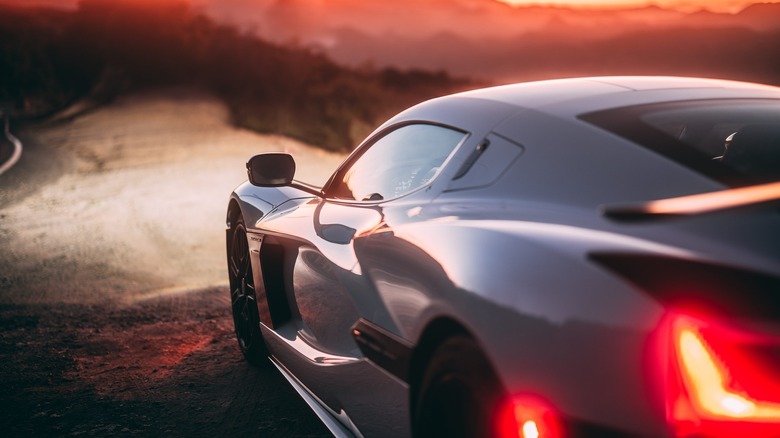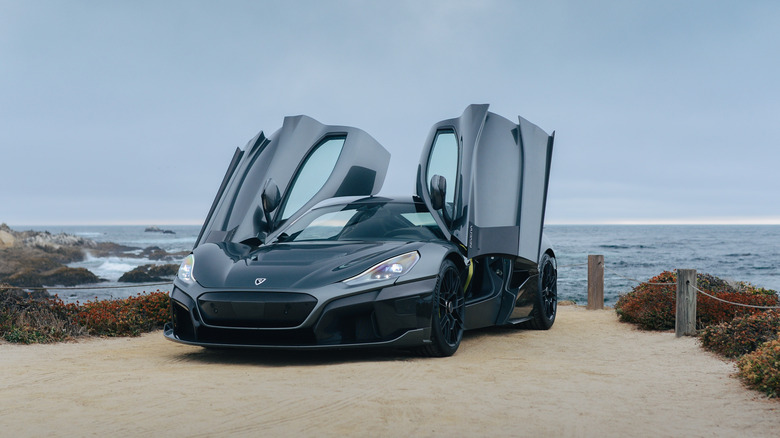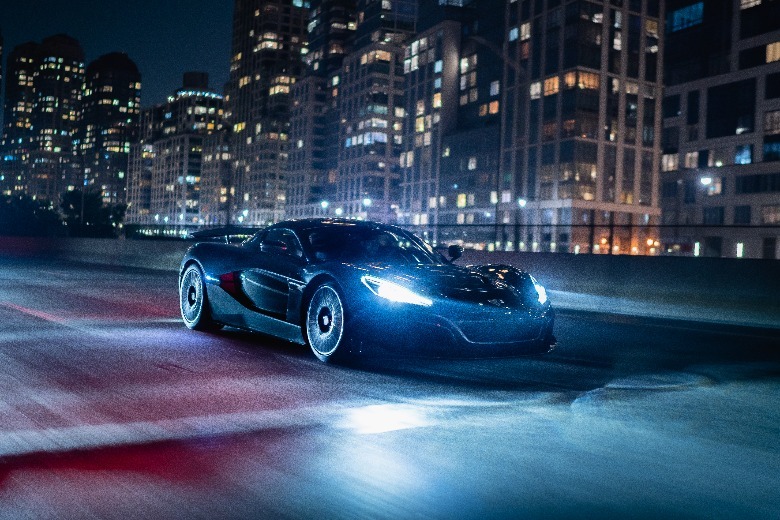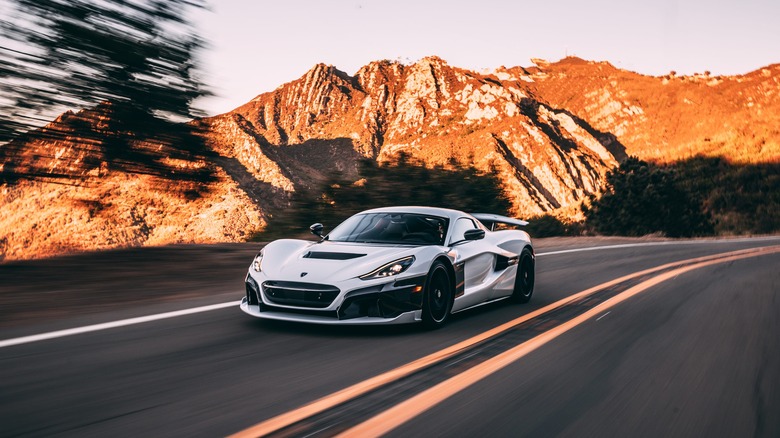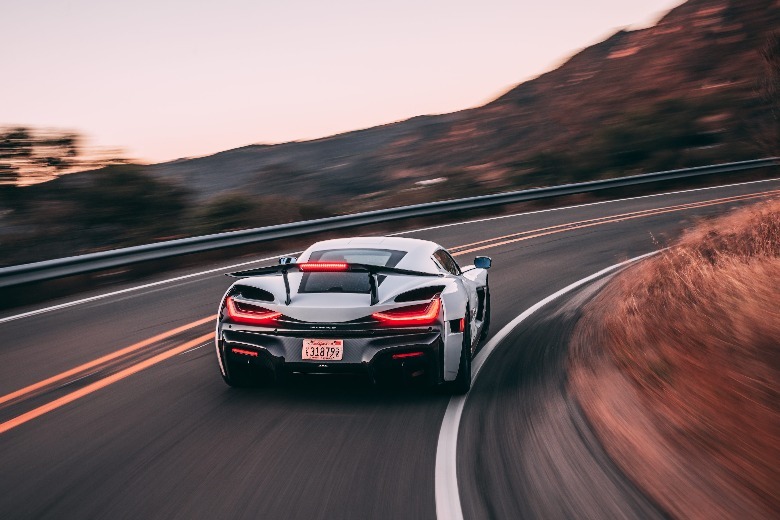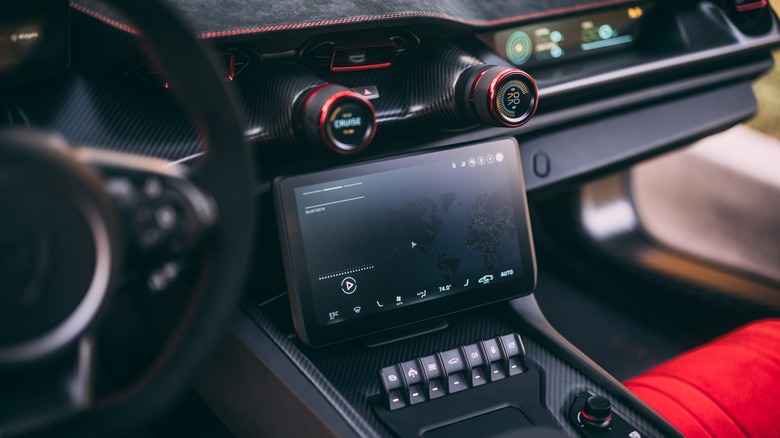The Stunning Truth About The Rimac Nevera Hypercar
Croatian hypercar maker and technology company Rimac Automobili has come a long way in its relatively youthful 13-year history. It unveiled its second production-intent hypercar, initially called the C_Two, at the 2018 Geneva Motor Show two years after debuting its first-ever Concept_One hypercar. The C_Two concept became known as the Nevera this year, and it seems the hypercar world will never be the same again.
It all started when company founder Mate Rimac got his first patent in 2006 for the iGlove, a wearable electronic device that functions as a keyboard and mouse when used with a laptop or computer, and he did all of it while still in high school. In 2008, Rimac had the itch to turn his BMW E30 into an all-electric racing car that he eventually called the e-M3, a passion project that ultimately set five Guinness and FIA World records for becoming the fastest accelerating electric car.
Rimac Nevera: The king of electric hypercars?
The Rimac Nevera may not be as flashy or pompous as its peers, an exclusive lineup that includes the Pininfarina Battista, Lotus Evija, and the incoming Tesla Roadster. Taking its name from a fierce lightning storm that hits the Mediterranean without warning, the Nevera is a hotbed of in-house developed technology that the company outsources to legacy automakers like Audi, Lamborghini, and Porsche.
Rimac took control of Bugatti when Volkswagen suggested a merger after initially pondering about shutting down the French hypercar maker for good. According to Popular Science, Rimac proposed to build a new hybrid hypercar for VW, which would be less than the potential cost of updating Bugatti's existing architecture. The rest is history, and Mate Rimac is now the CEO of Bugatti Rimac.
This newest wave of success had everything to do with the Nevera, a conquering, all-electric hypercar that puts all wagging tongues to rest. It costs a whopping $2 million and has four 450-kW electric motors drawing power from a 120-kW battery pack. The proprietary powertrain develops 1,914 horsepower and 1,725 lb-ft of torque — crazy numbers for a production car.
Quicker than stink
With almost 2,000 horses across all four wheels, the Rimac Nevera is as quick as they come. It scoots from zero to 60 mph in 1.85 seconds, destroys the quarter-mile in 8.58 seconds, and has a 258-mph top speed, numbers that would surely earn a ban from the NHRA. When you think about it, the Nevera is faster than the Bugatti Chiron and is even quicker than an F1 car (per Top Gear). And despite its mind-numbing performance numbers, the Nevera offers 341 miles of range and only takes 19 minutes to recharge from zero to 80% using a 500-kW fast charger.
Rimac develops its batteries, electric motors, inverters, and electrical architectures from scratch. Moreover, it made the Nevera's battery cooling system, infotainment system, and carbon fiber monocoque chassis in-house. Top Gear adds that Rimac is ahead of the curve in electric motor, battery, and inverter technology, enough for German automaker Porsche to become a strategic partner and shareholder in 2018.
Moreover, the Nevera's intelligent torque management system means you won't be wrapping your exotic hypercar around a tree upon stomping on the go pedal. That's because the system surveys the road and subsequently adjusts the torque delivery at each wheel, optimizing the power delivery and grip as the vehicle accelerates or enters a curve. Meanwhile, telepathic handling is possible via all-wheel torque vectoring that adjusts the power delivery between the left and right wheels. It also has a drift mode that feeds more torque to the rear wheels.
Driver Coach system
Rimac claims it took them three years to develop Nevera's Driver Coach, a system that could help drivers perform faster lap times on any racetrack. It uses 9 cameras, six radars, and 12 ultrasonic sensors that send data to an NVIDIA Pegasus computer to "coach" the driver using audio and visual instructions fed through the vehicle's speakers and display screens. The data is collected in the supercomputer, which processes about 6 TB of data per hour on the road. In short, Driver Coach is a guiding hand that teaches proper racing lines, braking points, and other related info.
Most people know the Nevera as a stupid-fast hyper EV. Yet more than that, it's also a testbed for developing new technology that could make its way to conventional production cars in the not-too-distant electric future. Only 150 Rimac Neveras will be constructed, but we can expect to see more from the Croatian EV maker in the coming years.
